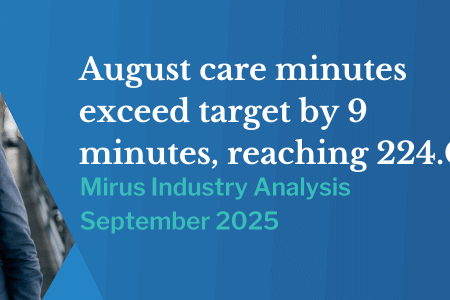Care Minute compliance continues to improve across the sector
November 25, 2025 | Care Minutes

By Tyler Fisher, Data Scientist
The aged care sector has made remarkable progress in meeting mandated care minute targets under the AN-ACC funding model, with strong improvements recorded over the past year. What began as a significant compliance challenge has shifted into a story of adaptation, operational discipline and sector-wide commitment to quality care.
When AN-ACC was first introduced, almost two-thirds of providers were not consistently meeting the care minute requirements linked to their subsidy claims. Under-claimed subsidies and outdated resident assessments created further pressure, making compliance difficult for many organisations.
By October 2024, the picture had changed dramatically. More than 75% of providers had reached compliance, and the number of one-star rated services had fallen to less than 2%. At the same time, the proportion of three-star services more than doubled—evidence of meaningful sector-wide uplift.
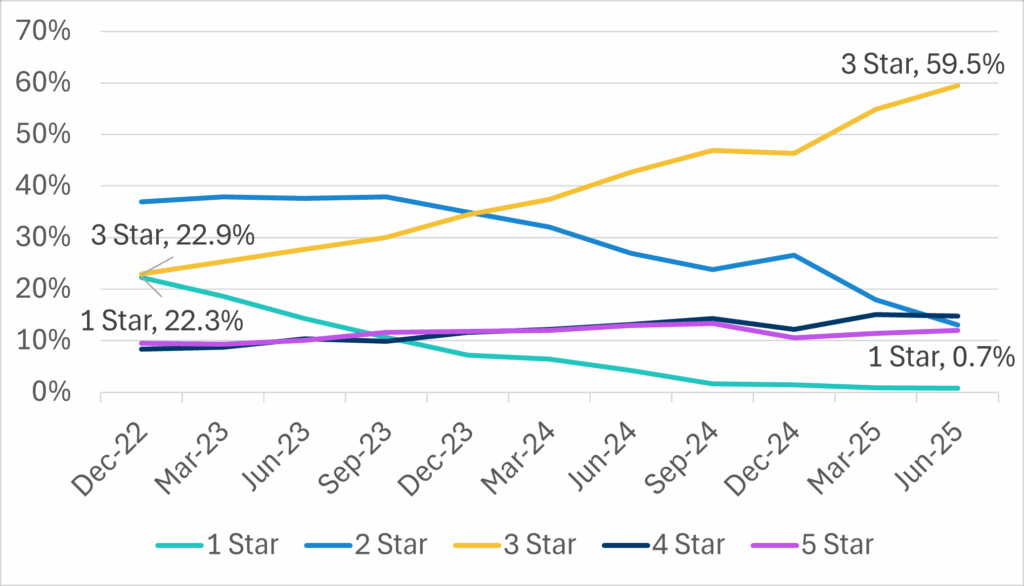
Although compliance dipped slightly when the mandated target increased to 215 minutes, providers responded quickly. By June 2025, compliance had risen again to over 86%, and one-star services dropped to below 1%. This rapid rebound demonstrates just how effectively providers are adjusting staffing levels and workforce models as targets evolve.
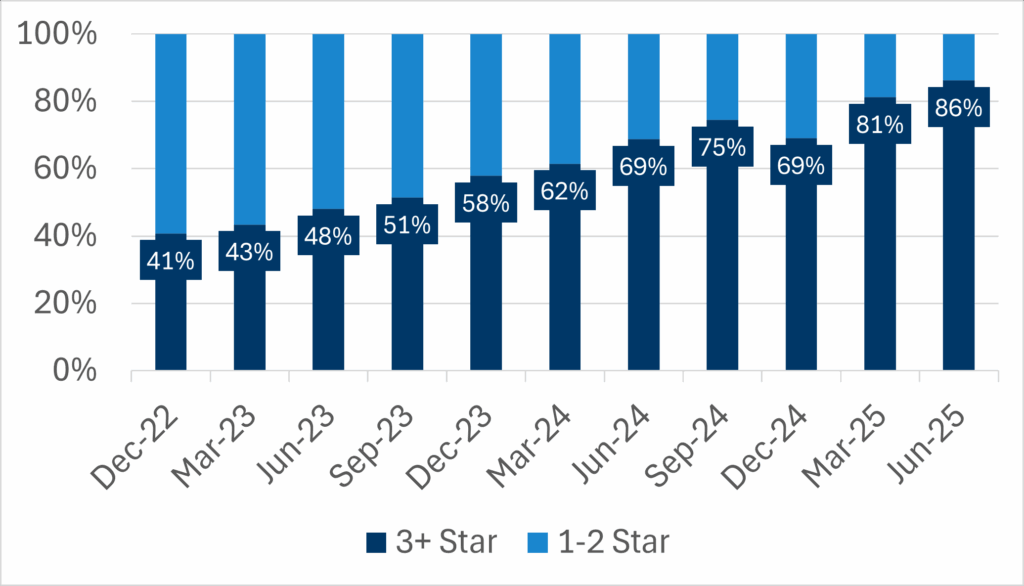
Stabilisation of claims and smarter rostering
Over the first two years of AN-ACC, ongoing resident reassessments drove a significant rise in case mix. By the third year, claims patterns had stabilised, reflecting the recalibrated RVU average of 215 minutes.
Despite higher occupancy and increased care demands, providers scaled their rosters effectively to meet rising benchmarks and maintain compliance.
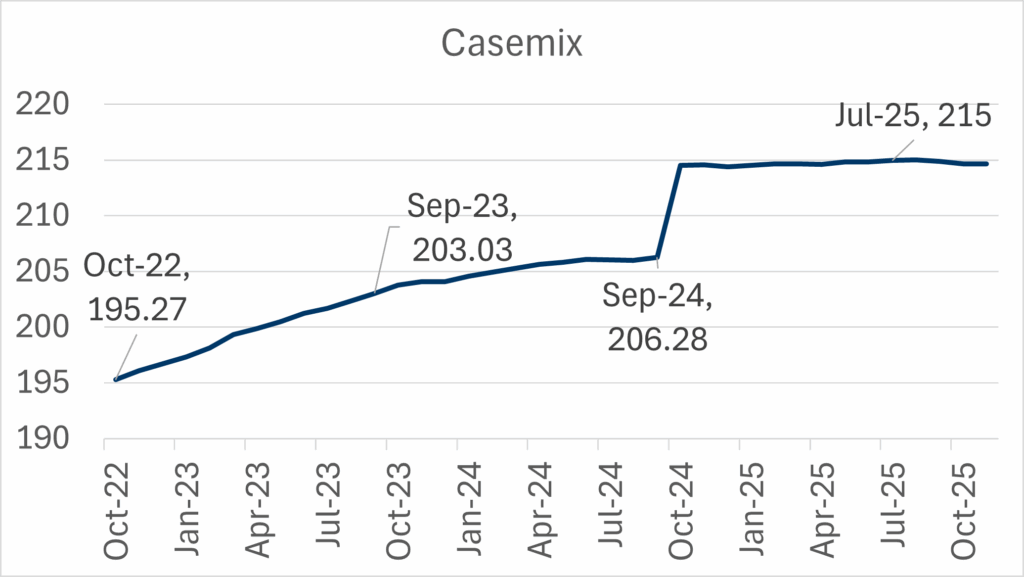
Delivered care minutes rose sharply throughout 2023 and tracked closely against target until mid-2024. The increase to 215 minutes created a temporary gap, but the underlying trend remained positive. Today, many providers are delivering minutes above the target, providing confidence around compliance—though it does narrow the margin available on subsidies.
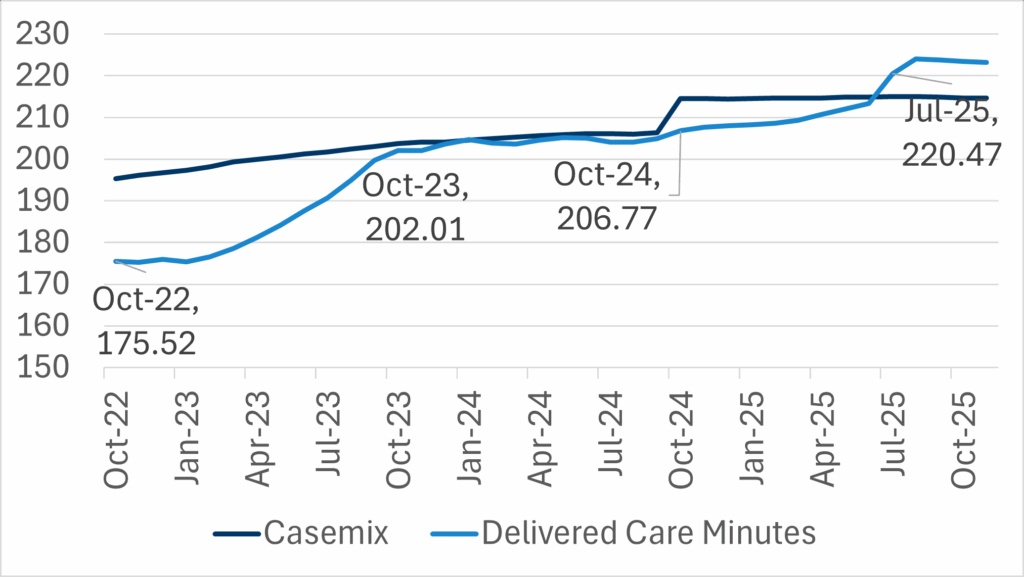
Financial impact: Managing risk while investing in care
The shift to a 215-minute target brought deeper financial considerations, particularly concerning the care minute supplement. Between Q1 and Q2 FY25, excess minutes reduced, narrowing overspend from $138 million to $98 million, while supplement risk increased from $43 million to $61 million.
In the following quarters, this trend reversed. Providers focused on protecting supplement revenue, and while roster overspend increased, supplement risk fell sharply. Comparing Q1 to Q4, the sector invested an additional $16 million in staffing to secure $21 million in funding that would have otherwise been lost.
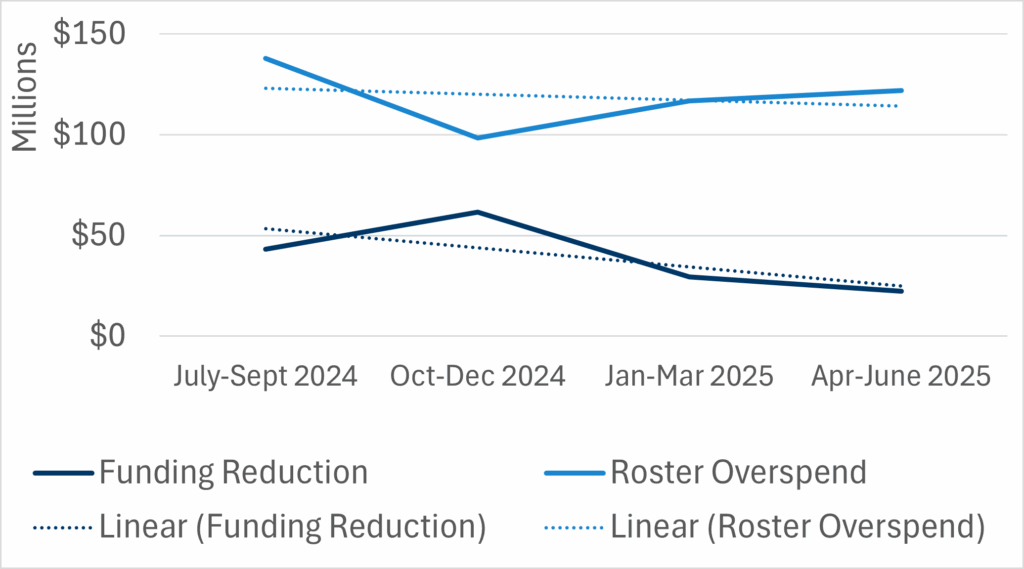
This reflects a sector that is increasingly strategic—balancing the cost of labour with the importance of maintaining compliance and protecting revenue.
Overall, the sector’s response to evolving care minute requirements underscores its resilience and commitment to quality. With compliance rates at their highest point since AN-ACC commenced and financial strategies becoming more sophisticated, providers are better positioned than ever to meet future regulatory shifts.
As care expectations continue to rise, this performance demonstrates a sector working hard to deliver improved outcomes for residents through strong governance, workforce planning and data-driven decision-making.
Learn more about how Care Minute Manager can optimise your aged care operations.


